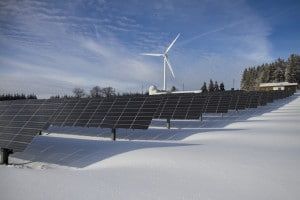4 Crucial Concerns When Addressing Sustainability in Business

Business sustainability
is the ability of a business to endure different scenarios. Ensuring business posterity is a progressive task where you need to take all sectors into consideration. Your financial, social, and economic status should align with the sustainability goals. It is impossible to work on one front and ignore the other sectors since they are co-related.
When making a business plan, there is always the big question of the bigger picture. Focusing your efforts on answering the question will keep you on track to business prosperity and posterity. This journey will make you invent and reinvent numerous strategies to stay afloat and grow your business.
Here are some of the methods you can use to secure sustainability in your business:
Good Environmental Practices
The green movement has taken over businesses globally. Every entity is going green through their energy and disposal choices – which are the most sensitive concerns. You need to identify how you can incorporate renewable energy options in your operations. Even though some of these energy sources will have high initial capital costs, they will significantly reduce operational costs.
You should also consider your means of waste disposal if any. Utilize the principle of the 3Rs per environmental regulations: reuse, recycle and reduce. You need to investigate methods you can use to manage your wastes —Master the art of minding the environment by seeking alternative and lasting environmentally friendly ways.
Financial Management
Proper financial management is critical in ensuring business sustainability . Most business sustainability tasks will require your financial input. You need to re-strategize to finance your new business plans. You can’t initiate these funding plans if you do not know the actual business position of your company. Sometimes you may need to forego an essential part of your business to achieve your goals.
You need to analyze your current financial records and the proposed plans to identify how you can finance these plans. The accuracy of your financial records will play a significant role in influencing your decision. Therefore, you need to check in on your financial reporting and affirm its accuracy. Comparing your current status to the expected results will also help you determine your progress and whether you need to change course to achieve business sustainability.
Leadership Concerns
The captain of the ship always steers the vessel. Hence, if you lose your way in leadership, your business will soon follow suit. You need to ensure that you constantly improve your leadership skills. You can attend seminars and webinars to connect and network with different individuals. Their aura and command of the market will surely rub off on you, thus creating a beneficial impact.
You can also take a leadership and business management course that will boost your understanding of the business and industry in general. Taking an online analytics degree will help you in the financial analysis and decision-making in your business.
Quickly Adapting to Change
Change is inevitable, and you should prepare yourself accordingly. It would help if you worked on embracing change and turning it in your favor. It is the most efficient way of handling change.
Business sustainability is a beneficial concept that most firms should adopt. However, you need to address the mentioned concerns if you want to have a shot at it!


